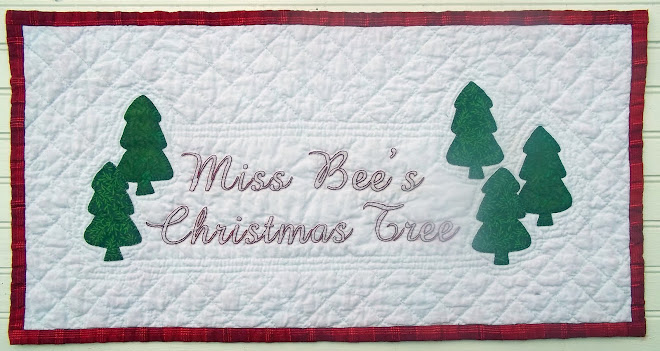The Right Type of Christmas Tree:
The NCTA (National Christmas Tree Association) has listed the following 16 trees as the most common trees used as Christmas trees in the United States:- Arizona Cypress
- Balsam Fir
- Canaan Fir
- Colorado Blue Spruce
- Concolor Fir (White Fir)
- Douglas Fir
- Eastern Red Cedar
- Eastern White Pine
- Fraser Fir
- Grand Fir
- Leyland Cypress
- Noble Fir
- Norway Spruce
- Scotch White Pine
- Virginia Pine
- White Spruce
Each of these Christmas trees have their own distinct shape, color, needle retention qualities, spacing of branches, scent, strength of branches, length of needle and availability. And one of these trees is probably YOUR perfect Christmas tree.
The National Christmas Tree Association’s Top 5:1. Fraser Fir: This national favorite is the one most folks envision when picking the perfect Christmas tree. It’s pyramidal in shape with rich green needles. The Fraser Fir’s branches point skyward and sometimes reveal the silvery lighter underside of the needles. The variety of color and the way light plays off of the dark and light, gives this Christmas tree depth and beauty.
Their branches are strong and are a good choice for those of you with large and heavy ornaments. The needles are between ½ - 1 inch long and soft to the touch with spaces between the branches, which makes it perfect Christmas tree for those of us who want to show off our ornament collections. The Fraser Fir ships well and not only has excellent needle retention but a lovely scent as well.
Because of its popularity, it is readily available across the United States and its pricing will usually be in the middle of the road. Not the most expensive tree on the lot, but not the cheapest either. Depending on where you live, the Fraser Fir is also known as the Southern Balsam or sometimes the Southern Balsam Fir.
Their branches are strong and are a good choice for those of you with large and heavy ornaments. The needles are between ½ - 1 inch long and soft to the touch with spaces between the branches, which makes it perfect Christmas tree for those of us who want to show off our ornament collections. The Fraser Fir ships well and not only has excellent needle retention but a lovely scent as well.
Because of its popularity, it is readily available across the United States and its pricing will usually be in the middle of the road. Not the most expensive tree on the lot, but not the cheapest either. Depending on where you live, the Fraser Fir is also known as the Southern Balsam or sometimes the Southern Balsam Fir.
2. Douglas Fir: This is the Christmas tree of my childhood memories. The Douglas Fir is also known by 47 other names from Alpine Hemlock to Puget Sound Pine – depending what part of the country your are in. And while it’s not a true fir, it doesn’t seem to matter to those of us on a mission of picking the perfect Christmas tree.
The Douglas Fir is so popular that it is shipped all over the world. Its color can range from dark green to blue green. The needles are 1 – 1 ½ inches long and quite soft to the touch, and I would qualify it as a long needled tree. They have a pleasant almost sweet aroma when the needles are crushed, and that scent will last all season long if the tree is well maintained.
Sometimes these trees are sheared to a “perfect” shape which makes them a little difficult to decorate, as the branches are so full, they don’t allow much room for ornaments to dangle down. Its branches are not the firmest, so if you have big, heavy ornaments, this might not be the perfect Christmas tree for you. However, the Douglas Fir has excellent needle retention as long as you KEEP IT WATERED.
 3. Balsam Fir: The Balsam Fir is so similar to the Fraser Fir that unless they are standing side by side with identification tags on them, I can’t tell them apart. I have bought many of these beauties over the years, probably because I’m such a sucker for the classic shape and fantastic fragrance that just screams “It’s Christmas.” It has dark green needles with a silvery cast and are approximately ¾ - 1 ½ inches long and soft to the touch. The branches point upward but not as much as the Fraser. Therefore, the underside of the needle isn’t exposed as much and I don’t think it has the color depth of the Fraser. It does have excellent needle retention which make it the perfect Christmas tree for those who stretch the holiday season from Thanksgiving to Super Bowl Sunday. It is pyramidal in shape with a delicate spire tip, the perfect stage for a well loved tree topper. The branches are flexible so your heavier ornaments will have to be hung a little closer to the trunk. This tree is so lovely and so popular that it has been duplicated as an artificial tree from the very beginning.
3. Balsam Fir: The Balsam Fir is so similar to the Fraser Fir that unless they are standing side by side with identification tags on them, I can’t tell them apart. I have bought many of these beauties over the years, probably because I’m such a sucker for the classic shape and fantastic fragrance that just screams “It’s Christmas.” It has dark green needles with a silvery cast and are approximately ¾ - 1 ½ inches long and soft to the touch. The branches point upward but not as much as the Fraser. Therefore, the underside of the needle isn’t exposed as much and I don’t think it has the color depth of the Fraser. It does have excellent needle retention which make it the perfect Christmas tree for those who stretch the holiday season from Thanksgiving to Super Bowl Sunday. It is pyramidal in shape with a delicate spire tip, the perfect stage for a well loved tree topper. The branches are flexible so your heavier ornaments will have to be hung a little closer to the trunk. This tree is so lovely and so popular that it has been duplicated as an artificial tree from the very beginning. 4. Colorado Blue Spruce: This tree has long been a favorite for decades, not just in the United States but in Europe as well. I’m pretty sure that this is the Christmas tree that Santa has at the North Pole. To me, it’s the most distinctive tree on the market. The Colorado Blue Spruce can range in color from a dull blue gray to a blue that is so silvery that, sometimes, it doesn’t even look real.
It is pyramidal in shape and very symmetrical. The needles are 1 – 1 ½ inches long on the lower branches with shorter near the top. Out of all the Christmas trees, the Colorado Blue Spruce is one of the best for needle retention. The branches are strong so it’s the perfect Christmas tree to display heavy ornaments, and there are spaces between the branches allowing longer ornaments to dangle. Like many of the trees in the Spruce family, it doesn’t have the softest needles, so handle with care. As much as I love this tree, there are two caveats: It doesn’t rate very well on the smell-o-meter. And it is usually the most expensive trees on the lot. This another one of the Christmas trees often duplicated into an artificial prelit commodity.
5. Scotch Pine aka Scots Pine: If you feel even a little bad about participating in the killing of trees in the name of Christmas, the Scotch Pine might appease your guilty green conscious.
The good news is that this tree is the most widely planted tree for commercial Christmas tree sales in the United States. It as planted specifically to be cut down, and fulfill its Christmas destiny. And there are several reasons why it’s so popular. First off the color which varies from a rich, dark green to bluish green to bright green. It has stiff, strong branches which makes it the perfect Christmas tree choice if you have collected a lot of heavy ornaments. The needles are 1 – 3 inches long and a Scotch Pine won’t drop it’s needles when it dries out. And the sharp pine scent lasts all season. On the down side, the branches can be so close together there is little space between them for hanging ornaments and the needles are very sharp. But back to the good news: as it is so widely available and so wildly popular it can be a very affordable choice when you’re watching your Christmas tree budget.
Here's a big shout out of "Thanks" to Rick Dungey, the Public Relations Manager over at The National Christmas Tree Association who so graciously allowed me to use these photos from their website. For a lot more information about Christmas trees, check them out at: http://www.christmastree.org
The good news is that this tree is the most widely planted tree for commercial Christmas tree sales in the United States. It as planted specifically to be cut down, and fulfill its Christmas destiny. And there are several reasons why it’s so popular. First off the color which varies from a rich, dark green to bluish green to bright green. It has stiff, strong branches which makes it the perfect Christmas tree choice if you have collected a lot of heavy ornaments. The needles are 1 – 3 inches long and a Scotch Pine won’t drop it’s needles when it dries out. And the sharp pine scent lasts all season. On the down side, the branches can be so close together there is little space between them for hanging ornaments and the needles are very sharp. But back to the good news: as it is so widely available and so wildly popular it can be a very affordable choice when you’re watching your Christmas tree budget.
Here's a big shout out of "Thanks" to Rick Dungey, the Public Relations Manager over at The National Christmas Tree Association who so graciously allowed me to use these photos from their website. For a lot more information about Christmas trees, check them out at: http://www.christmastree.org





No comments:
Post a Comment